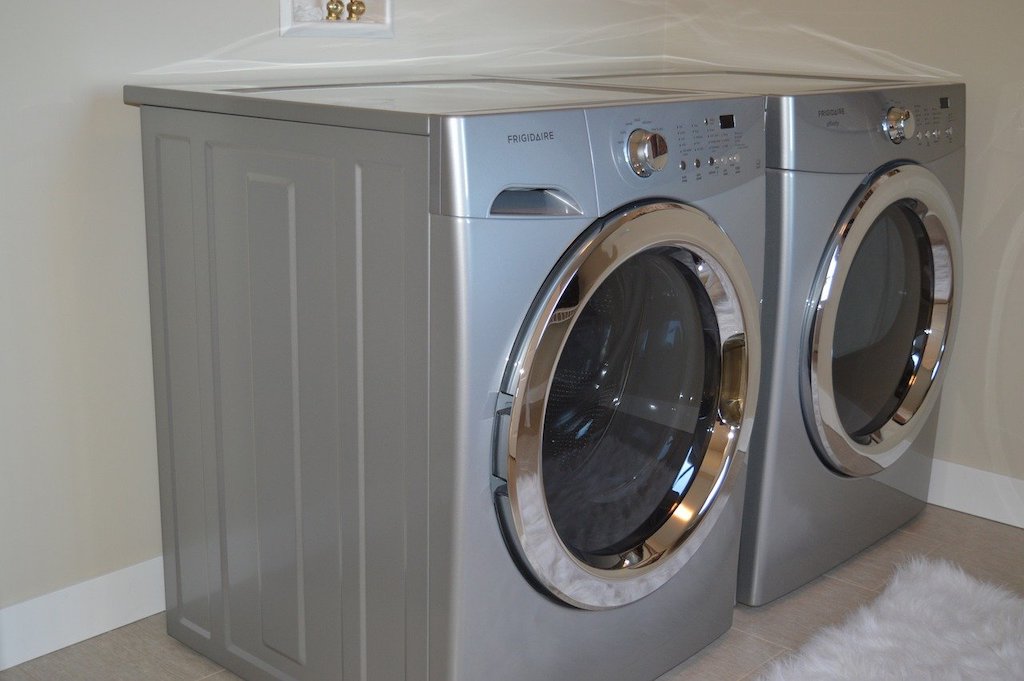Your Cart is Empty

We’ve all run into the problem of our bed sheets balling up in the dryer. We open the dryer door after the cycle is finished, expecting to pull out a clean, warm set of sheets ready to put back onto our mattress. But much of the time, we end up with a balled up lump, full of wrinkles and soggy spots. In order to avoid this nuisance and the headaches that come with it, we compiled the following tips to try out so you can get your sheets to dry more easily — without having to run the dryer more than once or iron them when they are out of the dryer.
The first mistake many of us make is gathering our wet sheets from the washing machine and placing them in a lump straight into the dryer. While tossing the sheets from washer to dryer may take less time, this all-too-quick method will result in damp, balled up sheets that may need multiple dryer sessions.
After washing, take your bedding pieces out of the washing machine one by one, and give them each a good shake. This accomplishes two things: 1) Each sheet and pillowcase is separated so they don’t get tangled up with the rest of the laundry, and 2) Sheets are free from tangles which reduces the likelihood of wrinkling during the drying process. You can also stop the dryer midway through and repeat this step. Try to untangle your sheets before the end of the dryer cycle when you can.
Dryer balls are a great hack for doing laundry, especially when drying bulky sheets. Plastic dryer balls with spiky nodules help to detangle and agitate the sheets so they don’t clump together. They can even decrease the time your sheets need to be in the dryer, making them a great energy-saving tool. You can also use tennis balls in lieu of dryer balls. Make sure they’re clean — you don’t want to use the tennis ball your dog has been chewing on for the past month.
Don’t have tennis balls laying around? Try throwing in a clean, dry bath towel into your load. The towel does the double duty of soaking up moisture so your sheets dry faster, while also adding texture so your sheets don’t ball up.
Often we skip the step of buttoning up our duvet cover because once it’s dry, we’ll have to unbutton it again to put the comforter in, and then rebutton to close it shut. With a QuickZip duvet cover, your comforter can be swapped in or out of your duvet cover easily with the convenience of a zipper. When washing a QuickZip duvet cover, it only takes a couple seconds to zip your duvet closed so that the rest of the bedding doesn’t end up balled up inside of it during the washing process. With easy-to-use zipper technology, you can avoid the soggy problem of wet sheets inside a damp duvet cover altogether.
Many apartments and homes are outfitted with small washer-dryer units that simply don’t have the capacity to handle king size bedding. This means that you may have to dry your sheets in two separate loads in order to thoroughly dry them without your sheets balling up. While this extra step might feel like a hassle, it allows both your clothes and your sheets the space to dry thoroughly, and avoids a third or fourth dryer cycle or the ironing step. Ultimately, avoiding dryer overload could actually save you time down the line.
This is a scary thought for some, but don’t worry, you don’t need to buy a new dryer just to avoid the annoying bed-sheet-ball-up. For most, simply following the previously mentioned techniques will ensure your sheet washing and drying process is easy breezy.
This tip is only for folks who are in the market for a new dryer, and are looking for one that’s the least likely to cause bed sheets to tangle. We recommend investing in what’s known as a “reverse action” tumble dryer, which switches the rotation of the dryer drum back and forth. The idea is that this back and forth movement helps prevent clothes and sheets from getting tangled, which also decreases the chance for your items to become creased in the dryer. Reverse action dryers are also more environmentally friendly.
We hope that some of these tips help you so you can prevent your bed sheets from balling up in the dryer. With a couple of tennis balls, some trial and error, and a bit of patience, you can conquer your next sheets-filled laundry day like a pro.
